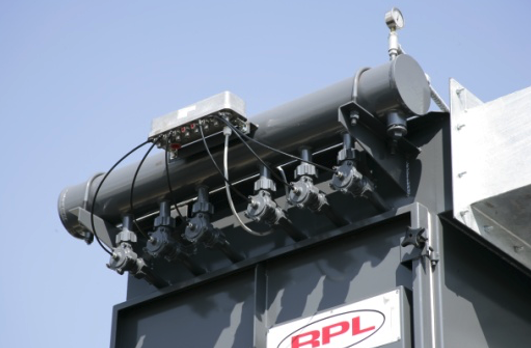RPL were approached by a multinational company with a factory in the midlands, who had been suffering from heat and fumes from two high frequency induction furnaces. The furnaces were positioned on a raised mezzanine platform below an asbestos roof.
A survey carried out determined that only one of the furnaces was in use at any one time, and the two were in line. An overhead crane and a swing arm lifting beam prevented a directly mounted overhead canopy being used. There was a small diameter extract spigot for the top slotted extract hood on each furnace.
The furnaces tipped using hydraulic rams as they were pouring the molten contents into the cooling vessel.


To overcome the access issues, a swing arm fitted with a duct and large extraction hood was fitted off a building column so it could extract from one or the other furnace at one time. The small spigots were expanded to handle more air volume and both ducted back to a dust filter unit located outside. The filter is a reverse jet type with 4 cassettes of bags fitted with inserts to keep their shape. A quick release bin at the base of the hopper enables convenient emptying of the dust.
A 15kW centrifugal fan was installed to cope with the high pressure system and was terminated with a high velocity cowl to meet the strict requirements set by the Coventry Environmental Health Department.
The working temperature at the filter was 150°C. Two roof mounted extract fans were also fitted to provide summer ventilation.
RPL won this order despite there being two cheaper quotes, which would not meet the strict requirements needed.


